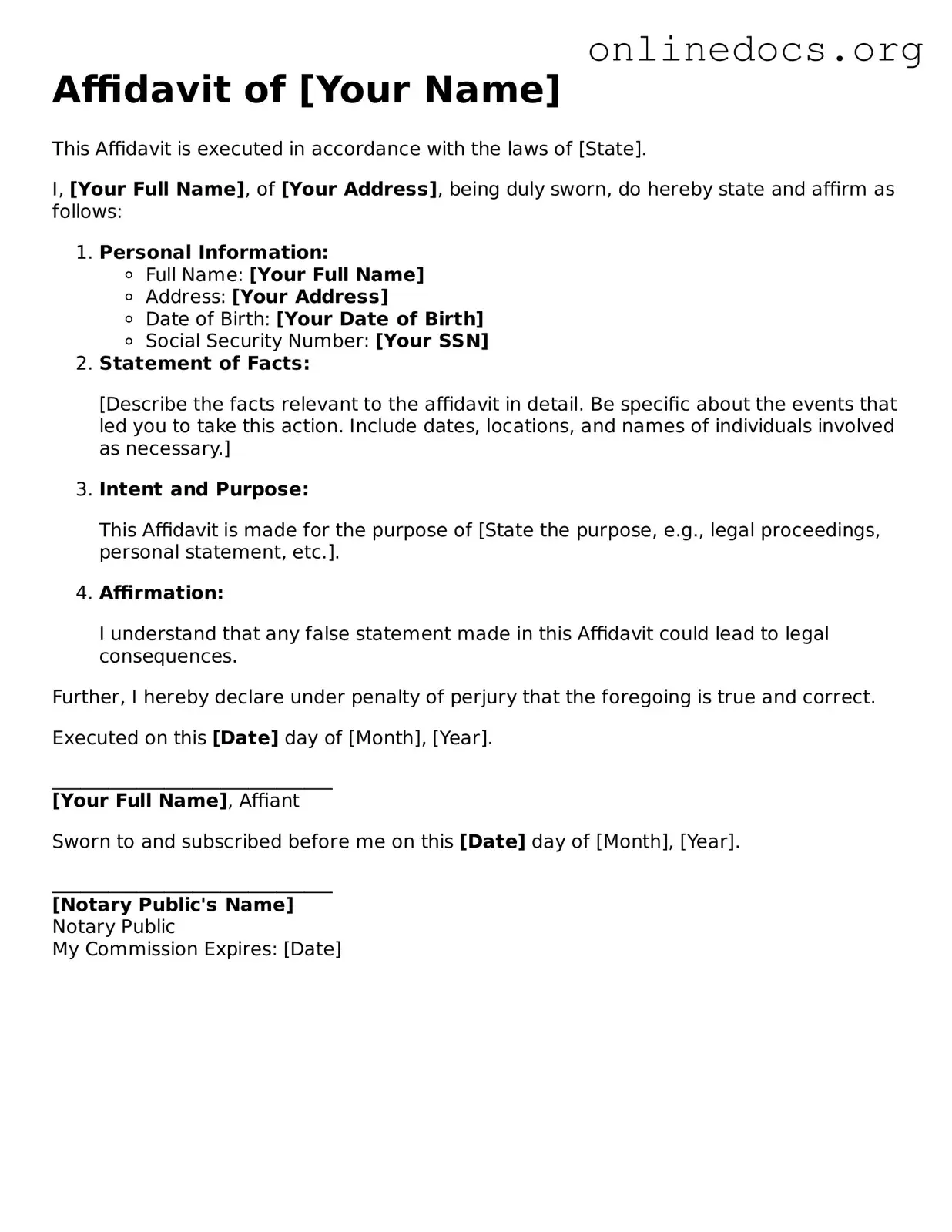Filling out an Affidavit form can be a straightforward process, but many individuals make common mistakes that can lead to complications. One frequent error is failing to provide accurate personal information. This includes not only names but also addresses and contact details. Inaccuracies can create confusion and may undermine the credibility of the affidavit.
Another common mistake is neglecting to include all required signatures. An affidavit typically requires the signature of the affiant, who is the person making the statement, as well as a witness or notary public. Omitting any of these signatures can render the document invalid.
People often overlook the importance of clarity in their statements. Using vague language can lead to misunderstandings. Instead, it is essential to be precise and specific about the facts being presented. This ensures that the affidavit clearly conveys the intended message.
Additionally, individuals sometimes fail to date the affidavit. A date is crucial because it establishes when the statement was made. Without a date, the affidavit may be questioned regarding its timeliness or relevance.
Another mistake involves not providing supporting evidence or documentation. While an affidavit is a sworn statement, accompanying documents can strengthen the claims made. Individuals should consider including relevant evidence to support their assertions.
Many people also forget to review the affidavit for completeness. After filling out the form, it is wise to double-check for any missing information or errors. A thorough review can prevent unnecessary delays or issues down the line.
In some cases, individuals may use the wrong format or template. Different jurisdictions may have specific requirements for affidavits. It is important to ensure that the correct format is used to avoid potential legal challenges.
Finally, failing to understand the legal implications of an affidavit can lead to significant problems. An affidavit is a sworn statement, and providing false information can have serious consequences. Individuals should take care to understand the responsibilities that come with signing an affidavit.
